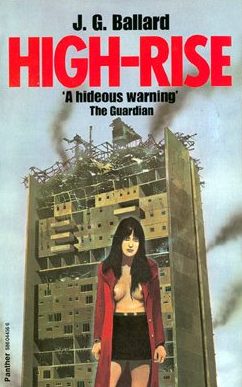 In the distinguished lexicon of England’s J.G. Ballard (1930-2009) his 1975 novel HIGH-RISE looms large. A notably brutal yet staunchly intellectual thriller set in a London-based residential high rise whose tenants devolve into lawlessness and savagery, HIGH-RISE provided a template for much of Ballard’s subsequent fictional output, and indeed the very definition of “Ballardian.”
In the distinguished lexicon of England’s J.G. Ballard (1930-2009) his 1975 novel HIGH-RISE looms large. A notably brutal yet staunchly intellectual thriller set in a London-based residential high rise whose tenants devolve into lawlessness and savagery, HIGH-RISE provided a template for much of Ballard’s subsequent fictional output, and indeed the very definition of “Ballardian.”
The Collins English Dictionary defines Ballardian as “resembling or suggestive of the conditions described in J.G. Ballard’s novels and stories, especially dystopian modernity, bleak man-made landscapes and the psychological effects of technological, social or environmental developments.” All those things are touched upon in HIGH-RISE, just as they were in Ballard’s previous novels THE ATROCITY EXHIBITION, CRASH and CONCRETE ISLAND, which are credited with moving him out of the science fiction milieu of his 1960s fiction. What marks out HIGH-RISE is its crime novel overlay, with a hardboiled sensibility (bequeathed, perhaps, by the crime fiction and film Ballard is said to have consumed in his younger years) married to the mordant surrealism that was his stock in trade. Such a combination wasn’t present in any of Ballard’s previous novels yet informed a great deal of his subsequent output.
One area in which HIGH-RISE does recall Ballard’s earlier novels is in its perverse take on a literary classic. Just as THE CRYSTAL WORLD (1966) provided a hallucinatory variant on HEART OF DARKNESS in its account of a crystal-plated jungle, and CONCRETE ISLAND (1974) offered a quasi-satiric updating of ROBINSON CRUSOE in its portrayal of a motorist stranded on a traffic island, HIGH-RISE provides a warped rethinking of LORD OF THE FLIES, contained within a type of building that in 1975 was considered novel and exotic—and, Ballard suggests, quite dangerous to the psyches of those fated to live in such a structure.
In HIGH-RISE the outrage is precipitated by the all-encompassing convenience of this “vertical city,” which has the effect of unleashing its residents’ deviant impulses. The madness begins with a bottle of wine dropped from one of the building’s upper floors that lands on the balcony of Robert Laing, a professor living in the midsection of the high rise. Another protagonist is Richard Wilder, a TV producer determined to document the deteriorating conditions in the building, which escalate to acts of petty vandalism, brutality and murder. The bad behavior is marked by a toxic classism, with tension between the well-off upper floor residents and the much poorer lower-floor ones boiling over, and the people in the middle, such as Laing, caught in the crossfire. All the while the residents of the high-rise continue to leave the building each day for work, invigorated by the savagery.
The novel is drafted with a great deal of suspense and a disturbingly convincing grasp of psychopathology. It also, unfortunately, encapsulates many of Ballard’s weaknesses as a novelist, most notably its three interchangeable male protagonists, all of whom function as dispassionate observers to the mayhem, proffering observations like “In many ways, the high-rise was a model of all that technology had done to make possible the expression of a truly ‘free’ psychopathology.”
Ballard’s subsequent books, which include the picturesque fantasies THE UNLIMITED DREAM COMPANY, HELLO AMERICA and THE DAY OF CREATION, and the autobiographical novels EMPIRE OF THE SUN and THE KINDNESS OF WOMEN, showed little immediate kinship with HIGH-RISE, but its lineage is definitely evident in 1988’s RUNNING WILD—so too 1996’s COCAINE NIGHTS, 2000’s SUPER-CANES, 2003’s MILLENIUM PEOPLE and 2006’s KINGDOM COME, validating critic Patrick Parrinder’s claim that “(Ballard’s) incessant, unashamed repetition of themes and settings suggests the work of a painter…The personal style is utterly distinctive, but the canvases when hung together look remarkably alike.”
RUNNING WILD, a novella, once again dramatizes the corrosive effects of a technological paradise. Said paradise is Beauchamp 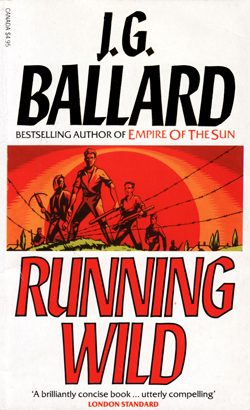 Place, a tightly regulated heavily regulated suburb whose populace resides in absolute comfort and serenity. One morning Beauchamp’s adult residents are found murdered in horrific fashion and their children apparently kidnapped. The resulting events are told from the point of view of Dr. Richard Greville, a police-appointed psychiatrist investigating the crime. He considers several possible explanations for the killings—terrorism, covert military action, attacks by space aliens—before deciding on a possibility most readers will have long since figured out for themselves: that the kids of Beauchamp Place collectively killed their parents and then took off. This seemingly outrageous supposition is given credibility when one of the missing children unexpectedly turns up in a near-catatonic state, only to be snatched away by a couple of the other missing kids, who shoot several people in the process.
Place, a tightly regulated heavily regulated suburb whose populace resides in absolute comfort and serenity. One morning Beauchamp’s adult residents are found murdered in horrific fashion and their children apparently kidnapped. The resulting events are told from the point of view of Dr. Richard Greville, a police-appointed psychiatrist investigating the crime. He considers several possible explanations for the killings—terrorism, covert military action, attacks by space aliens—before deciding on a possibility most readers will have long since figured out for themselves: that the kids of Beauchamp Place collectively killed their parents and then took off. This seemingly outrageous supposition is given credibility when one of the missing children unexpectedly turns up in a near-catatonic state, only to be snatched away by a couple of the other missing kids, who shoot several people in the process.
The reason for the killings? Boredom, apparently, which Ballard once told an interviewer was his “big fear” about the future, and the possibility of civilization becoming a “vast, comforting suburb of the soul”—as a peripheral character states (in quintessentially Ballardian syntax), “In a totally sane society, madness is the only freedom.”
As a mystery RUNNING WILD falls flat, with much of its disturbing power being due to real-life events that occurred after its initial publication. I’m referring to the Columbine massacre in particular, unwittingly evoked in the final chapters, wherein the particulars of the kids’ rampage are recreated. Prophetic is a word that’s often used in descriptions of Ballard’s fiction, and I’d say it’s particularly apt here.
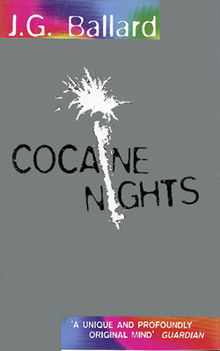 The dreaded “suburb of the soul” is once again invoked in the form of Estrella Del Mar, the ultra-swank Spanish retirement community of COCAINE NIGHTS. Its protagonist is Charles Prentice, a travel writer investigating the incarceration of his brother, who it seems was wrongly blamed for a deadly fire that occurred in a house located in Estrella Del Mar. Prentice’s brother has admitted to starting the fire, even though just about everyone connected with the crime proclaims his innocence. This inspires Prentice to take a closer look at life in Estrella Del Mar, which turns out to be quite a happening place despite the fact that, as with HIGH-RISE, it’s riddled with crime.
The dreaded “suburb of the soul” is once again invoked in the form of Estrella Del Mar, the ultra-swank Spanish retirement community of COCAINE NIGHTS. Its protagonist is Charles Prentice, a travel writer investigating the incarceration of his brother, who it seems was wrongly blamed for a deadly fire that occurred in a house located in Estrella Del Mar. Prentice’s brother has admitted to starting the fire, even though just about everyone connected with the crime proclaims his innocence. This inspires Prentice to take a closer look at life in Estrella Del Mar, which turns out to be quite a happening place despite the fact that, as with HIGH-RISE, it’s riddled with crime.
A shady individual named Crawford, it turns out, is the instigator of Estrella Del Mar’s crime wave, and enlists Prentice in a new scheme to “wake up” Costa Del Sol, a neighboring retirement complex whose participants have become walking zombies. Crawford figures he can rekindle these peoples’ life force by committing a string of petty crimes, with Prentice playing the part his brother did in Estrella Del Mar—inevitably, however, that part entails a much greater sacrifice than Prentice anticipated.
COCAINE NIGHTS is as compelling as any novel Ballard ever wrote, and its core concept—that crime and murder have replaced religion and politics as the driving force behind modern life—is a profoundly disturbing one, rendered in a shockingly convincing manner by the author’s one-of-a-kind imagination. But again, it’s not particularly unique.
SUPER-CANNES offers more of the same, with a premise nearly identical to that of COCAINE NIGHTS—and by extension HIGH-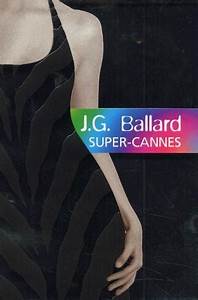 RISE and RUNNING WILD. In SUPER-CANNES the setting is Eden Olympia, a French business park where richer-than-God professionals thrive, but stay healthy only by committing clandestine rapes and beatings. Into this hothouse come the publishing magnate Paul Sinclair, investigating a series of killings committed by a doctor Greenwood, who months earlier slaughtered several of his colleagues. It seems the (not so) good doctor didn’t fit in so well at Eden Olympia—and neither does Sinclair. Could he be headed for a fate similar to that which befell Greenwood?
RISE and RUNNING WILD. In SUPER-CANNES the setting is Eden Olympia, a French business park where richer-than-God professionals thrive, but stay healthy only by committing clandestine rapes and beatings. Into this hothouse come the publishing magnate Paul Sinclair, investigating a series of killings committed by a doctor Greenwood, who months earlier slaughtered several of his colleagues. It seems the (not so) good doctor didn’t fit in so well at Eden Olympia—and neither does Sinclair. Could he be headed for a fate similar to that which befell Greenwood?
The novel certainly is a page-turner, with a good eye for surrealistic detail and a more skillfully developed, confident narrative drive than is usual for Ballard, but, as with the previous novel, there’s nothing in SUPER-CANNES that wasn’t adequately covered in its predecessors.
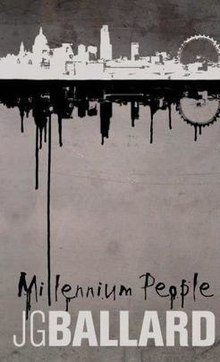 MILLENIUM PEOPLE at least offers some variation on subject matter that by the time of its 2003 publication had grown clichéd. Once again we have a group of upper middle Class professionals whose repressions are unleashed within a seeming paradise, in the case a housing development called Chelsea Marina. Here the residents elect to elevate their standard grievances—inflated parking charges, discriminatory zoning laws, over-priced housing—into a full-blown revolution, complete with mass demonstrations and violence.
MILLENIUM PEOPLE at least offers some variation on subject matter that by the time of its 2003 publication had grown clichéd. Once again we have a group of upper middle Class professionals whose repressions are unleashed within a seeming paradise, in the case a housing development called Chelsea Marina. Here the residents elect to elevate their standard grievances—inflated parking charges, discriminatory zoning laws, over-priced housing—into a full-blown revolution, complete with mass demonstrations and violence.
The protagonist, a psychiatrist named David Markham, is drawn to Chelsea Marina when his wife is killed in an airport bombing perpetrated by this “new proletariat.” Infiltrating the group, Markham finds himself becoming sympathetic to its aims, and in the process grows romantically involved with the pointedly monikered Kay Churchill, a promiscuous hottie who’s spearheading the revolution.
It all sounds promising, certainly, but something’s off. The lackadaisical narrative has little in the way of urgency or momentum, an effect further aggravated by a quasi-satiric tone that wasn’t present in the earlier novels (whose seriousness only served to magnify their latent absurdities). This is despite Ballard’s claim that “There’s no satire in (MILLENIUM PEOPLE) at all,” suggesting he may have never entirely gotten a hand on its conception.
Ballard’s final novel was KINGDOM COME, whose opening line “The suburbs dream of violence” could effectively summarize each 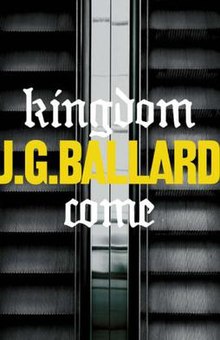 of the six publications outlined here. Once again we’re presented with a chaos-inducing superstructure, in this case the Metro-Centre, a vast British mall complete with its own round-the-clock cable channel and sports club. The residents of the surrounding towns view the place as a veritable shrine, even after a maniac embarks on a shooting rampage in the Metro-Centre.
of the six publications outlined here. Once again we’re presented with a chaos-inducing superstructure, in this case the Metro-Centre, a vast British mall complete with its own round-the-clock cable channel and sports club. The residents of the surrounding towns view the place as a veritable shrine, even after a maniac embarks on a shooting rampage in the Metro-Centre.
The protagonist is Richard Pearson, an advertising executive whose father is killed in the shooting. Investigating the rampage, Pearson moves into his father’s flat near the Metro-Centre, where (like Greville, Prentice, Sinclair and Markham) he becomes increasingly immersed in its hermetic universe. Pearson decides that, being the ad wiz he is, he’ll take over the place and use it for his own ends, in the process becoming an unwitting neo-fascist as the violence and isolationism of its patrons become ever more pronounced as a result of Pearson’s all-too-effective ad campaign.
Ultimately, KINGDOM COME is a powerful piece of work that plays like a collection of J.G. Ballard’s greatest hits: the early bits, with the protagonist gradually becoming aware of the secret culture of violence surrounding him, are right out of COCAINE NIGHTS, SUPER-CANNES and MILLENIUM PEOPLE, while the latter ones, in which the Metro-Centre’s increasingly isolated patrons form a twisted universe within, could be outtakes from HIGH-RISE. KINGDOM COME may not be among J.G. Ballard’s standout books, but it does prove that even near the end of his life Ballard had lost little of his descriptive power or disarmingly prophetic imagination.
